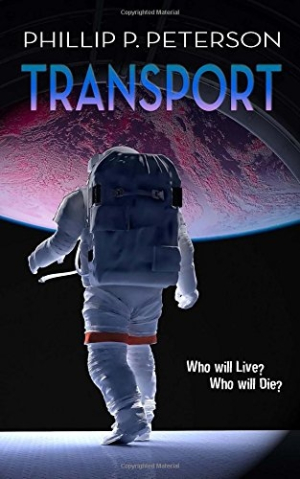
Transport
Death Mission
A complex science fiction tale, Transport raises ethical questions and shows how easily science can be corrupted.
In Transport: Death Mission, Phillip P. Peterson crafts a bold narrative that shows that science can simultaneously provide a second chance and be a destructive force. The story includes examinations of the death penalty, government, and moral dilemmas.
Russell Harris is counting down his final hours on death row when his former general arrives with an ultimatum: be executed or go on a series of missions that could possibly end in gruesome death. He chooses the latter. He’s placed with nine other death row inmates who undergo army training.
Russell receives two surprises. One comes via another recruit, the former astronaut Ellen Slayton. The second is a mysterious alien sphere that transports living human beings to other planets.
The first inmate transport doesn’t go quite as expected: a recruit comes back mutated, insane, and dying. The more missions the team goes on, the higher the risk of death, and the closer Russell gets to Ellen. He becomes addicted to the feeling of discovery: the new planets, new worlds. But after the horrific sight of a man who explodes all over the sphere and another inmate’s death from radiation poisoning, Russell questions whether these missions are moral.
A slow character-led buildup pays off when science elements are introduced. The sphere presents unexpected dangers for the inmates while providing a metaphor for the obsessively destructive nature of humans. An alien race is said to have lost their world because they couldn’t handle the technology found by these human scientists.
Part of the buildup comes through Russell’s characterization. He’s on death row, but he’s not a stereotypical killer. It’s hard to imagine him as murderer until he confesses to Ellen what his crime was. Each inmate has a different reason for being on death row, highlighting the questionable morality of capital punishment. Transport successfully raises ethical questions: Is the death penalty just? Does someone acting in self-defense or grief deserve the death penalty?
Each world depicted in the novel is either beautiful or horrific. One has a land of grass and trees taller than anything imaginable. Another has nothing but spewing lava that nearly burns an inmate alive. In a way, the characters have equally interesting landscapes. Russell is serene and accepting of his fate until a possible second chance presents itself. Ellen blames herself for her actions, but on a whole is likable, genuine, and sympathetic. Even the worst of the characters, someone who really doesn’t earn likability, manages to gain sympathy.
The ragtag group has their differences, but they are shown to share the same fears. Russell struggles with a range of emotions, from hope to curiosity to fear to rage. As Russell progresses, so does the plot. The more Russell connects with the science of the sphere, the more is learned about the alien technology.
Transport will appeal to those who love complex science fiction. It shows the good of science, but it also shows how easily it can be corrupted.
Reviewed by
Elizabeth Konkel
Disclosure: This article is not an endorsement, but a review. The publisher of this book provided free copies of the book and paid a small fee to have their book reviewed by a professional reviewer. Foreword Reviews and Clarion Reviews make no guarantee that the publisher will receive a positive review. Foreword Magazine, Inc. is disclosing this in accordance with the Federal Trade Commission’s 16 CFR, Part 255.
